Julian Komar – Growth Traders Toolbox | Digital Download
$360.00 $25.00
Digital Product
Julian Komar – Growth Traders Toolbox
GROWTH TRADERS TOOLBOX
Become a growth and momentum stock trader!
300 videos, >25 hours + 300 pages chart book. All you need to know to trade growth and momentum stocks.
- >300 videos with >25 hours in total
Get access to all the knowledge you need: Risk management, stock selection, watchlist management, stock screening, chart analysis, market analysis, buying / selling. - Learn to find and trade super-stocks
All super-stocks have something in common: Fast growing companies with innovative products or services. You learn how to identify and trade them early. - Regularly new content
Since the launch of the course I added more than 25 new videos with trades and market analysis. If the market offers something to learn I will add a new lesson.
The December survey showed that 99% of all students would recommend the course to a friend! - Fits your learning style
You can watch the videos whenever and wherever you want. It’s compatible to smartphones, tablets and normal PCs.
What’s stopping you?
Join now and you will get access to the content immediately!
More than 300 videos full of stock trading strategies and tactics
My own story …
Welcome!
In my more than 13 years of stock trading experience I learned a lot from other traders. I attended multiple mentorship programs to deepen my trading knowledge and experience.
Today I trade growth and momentum stocks with a systematic strategy and a holding period from weeks to months for winning trades and days for losing trades. That’s the style which perfectly fits to my personality.
I focus on discovering high potential, innovative companies which are able to grow their sales very fast and have a huge growth potential in future. That’s where my passion is! I spend 95% of all my energy in doing research and find potential super stocks.
In Growth Traders Toolbox I want to share my knowledge with you. You get insights into my own trading, inspiration for your own trading or a good foundation to start your trading career.
All the best for you!
Julian
What you will learn …
This is not a classical video course! It’s a school! New content will be release regularly.
Get access to over 300 videos with more than 25 hours in total + 300 pages analyzed charts to train your chart reading skills!
- US stocks only, medium term approach – no day trading! Perfect for part-time traders.
- Risk management: How to calculate the right position size and manage single trade and portfolio risk.
- Using stock screeners: Be consistent in your stock selection and reduce work.
- Fundamental & technical analysis: Find high potential stocks which can move strongly.
- Chart & volume patterns: Learn to read supply & demand in the chart.
- 300 analyzed stock charts as example to train your chart analysis skills! Will be extended to 600 charts soon …
Content (will be extended regularly)
I will add more content regularly. Next topics: Example videos in TradingView / MarketSmith, Trading Psychology and Mindset …
1 Welcome
- How to use the video course
- Golden rules
- Reading list stocks and trading
2 Risk Management
- Intro
- Goal of risk management
- Knowledge: What is a draw down?
- The 4 levels of risk management
- Knowledge: What does 1% risk mean?
- What is portfolio risk?
- Build up portfolio risk slowly
- Limit your portfolio risk to 5%
- How many positions should a portfolio have?
- Using margin
- Learnings about portfolio risk management
- What is cluster risk?
- Capital concentration vs. diversification
- Cluster risks in your portfolio
- Example: Portfolio cluster risks
- Learnings about cluster risk management
- What is information risk?
- 3 types of information risk
- Take a 20% / 30% gap into account
- Limit your position size
- Example: Reduce position size before earnings
- Avoid news driven or story stocks
- Learnings about information risk management
- What is single trade risk?
- Risking 1% of your trading capital is enough
- Knowledge: What is stop loss distance?
- Example: The position size depends on the stop loss distance
- How to calculate the position size
- Knowledge: What is R in trading?
- Always keep the risk at the same amount
- 3 Examples of position sizing
- Automatic risk adjustment
- Learnings about single trade risk management
- Risk management quiz
- Risk Management Plan
3 Stock Selection
- Stock Selection Checklist
- Intro
- Goal of stock selection
- Become a specialist in a small trading niche
- The stocks we want to find
- Knowledge: What are institutions?
- Look for institutional quality stocks
- Learnings about institutional quality stocks
- Strong technicals is a must
- Knowledge: What is relative strength?
- Relative strength shows you the leaders
- Only buy stocks in an uptrend
- Exponential moving averages
- Look for new all-time highs
- Stocks that doubled can double again
- Look for multiple weeks trading bases
- Interpret the volume behavior
- Learnings about strong technicals
- Outstanding sales (and EPS) growth
- Strong sales growth is a must
- EPS is a must for mature companies
- Avoid negative EPS
- Strong EPS estimates are a big plus
- Stocks matching all fundamental criteria
- Young companies must have a higher growth
- Examples of young companies with a higher growth
- Learnings about fundamental criteria
- Using stock screeners
- 2 different screener software
- MarketSmith: High RS screener
- MarketSmith: High RS screener example
- MarketSmith: IPO 1 year screener
- MarketSmith: IPO 1 year screener example
- MarketSmith: IPO 3 year screener
- MarketSmith: IPO 3 year screener example
- MarketSmith: Weekly unusual volume screener
- MarketSmith: Weekly unusual volume screener example
- MarketSmith: Topic screener
- MarketSmith: Topic screener example
- MarketSmith: Unusual volume screener
- MarketSmith: Unusual volume screener example
- MarketSmith: New 52 week highs screener
- MarketSmith: New 52 week highs screener
- MarketSmith: >10% week performance screener
- MarketSmith: >10% week performance screener example
- MarketSmith: >90 RS screener
- MarketSmith: >90 RS screener example
- MarketSmith: >100% year performance screener
- MarketSmith: >100% year performance screener example
- MarketSmith: EPS >50% screener
- MarketSmith: EPS >50% screener example
- MarketSmith: New RS high screener
- MarketSmith: New RS high screener example
- MarketSmith: Big EPS estimate screener
- MarketSmith: Big EPS estimate screener example
- FinViz: EPS estimate >30% screener
- FinViz: EPS estimate >30% screener example
- FinViz: Strongest stocks screener
- FinViz: Strongest stocks screener example
- FinViz: >20 sales growth screener
- FinViz: >20 sales growth screener example
- FinViz: >100% performance over 12 months screener
- FinViz: >100% performance over 12 months screener example
- FinViz: >10% performance last week screener
- FinViz: >10% performance last week screener example
- FinViz: High volume today screener
- FinViz: High volume today screener example
- FinViz: New 52 week high screener
- FinViz: New 52 week high screener example
- FinViz: IPO last year screener
- FinViz: IPO last year screener example
- Only put the best candidates on your watchlist
- Tips to go through your screener
- Daily and weekend routine
- Go through sectors and industries
- Go through sectors and industries – Example
- Comparing two stocks
- Sister stocks
- Learnings about stock screeners
- Require a disruptive theme or products
- Company lifecycle
- Mid cap companies turning into large cap companies
- Mid cap companies turning into large cap companies – Example
- Future growth potential is important
- Disruptive companies gain market share
- Growth acceleration through events
- How to do research about companies
- How to do manual research for stocks
- Best sources for research
- Price is more important than any fundamentals or story
- Major events and technology changes
- Global technology changes
- Example: Railways in the 19th century
- Cycle for disruptive and innovative themes
- Example 1: Electric vehicles
- Example 2: 5G networks
- Example 3: Telehealth
- Example 4: Cloud software
- Example 5: Semiconductors
- Example 6: E-commerce
- New companies take over the leadership
- Learnings about disruptive themes and products
- Product or service focused companies
- Focused vs. wide range of products companies
- How growth companies scale sales and profits
- Scaling sales and profits – focused vs. wide range of products companies
- Market dominance is an important factor
- Entrepreneurial companies
- Important facts about entrepreneurial companies
- Examples – Introduction
- Example 1: AMD
- Example 2: NVDA
- Example 3: TDOC
- Example 4: AAPL from 2001
- Example 5: TWST
- Example 6: TTD
- Example 7: ETSY
- Example 8: FB (early years)
- Example 9: CSCO (early years)
- Example 10: COUP
- Example 11: SHOP
- Example 12: EBAY (early years)
- Example 13: WMT (early years)
- Example 14: AAXN / TASR
- Example 15: ADBE
- Example 16: SE
- Example 17: VRSN
- Example 18: FIVN
- Learnings about product focused, entrepreneurial companies
- Extra lesson: From macro to micro view
- Stock selection quiz
4 Watchlist management
- Tools you will learn about
- My own experience
- Limits help to focus and maintain consistency
- 2 watchlists: Main and focus
- Main watchlist
- Weekend routine
- Examples
- Get a feeling for your niche by looking at the daily changes
- From main to focus watchlist
- List to the feedback from your watchlist
- Learnings
- Focused watchlist
- Daily routine
- Examples
- Using alerts
- Learnings
- Theme watchlists
5 Charts
- Tools you will learn about
- My own experience
- Getting a first impression of a stock by looking at charts
- Chart reading is a craft and art
- Start every analysis with the chart
- Weekly and daily charts
- Indicators in the charts
- Weekly charts tune out the noise
- Learnings
- What makes a good technical chart picture?
- Staircase effect
- Support at EMA 13 and EMA 40
- Shakeouts
- Tight trading bases
- Clean and harmonic price action
- Relative Strength to the S&P 500
- Volatility contraction before breakout
- Learnings
- Accumulation and distribution in the daily chart
- Accumulation and distribution in the weekly chart
- Volume increase / decrease in the daily chart
- Volume increase / decrease in the weekly chart
- Monster volume or volume spikes in the daily chart
- Exhaustion on monster volume or volume spikes
- Monster volume as a sign for a start or end of a trend
- Monster volume or volume spikes in the weekly chart
- Learnings
- Stocks have an own personality
- Examples
- Learnings
- Chart patterns
- Cup and handle
- Knowledge: Tight vs. wide and loose consolidations
- Double bottom
- Flat base
- Consolidation
- Volatility Contraction Pattern (VCP)
- IPO base (short)
- IPO base (long)
- Chart patterns develop in a correction
- All chart pattern have something in common
- Chart patterns are created by the ebb and flood of demand and supply
- Chart patterns are created by the ebb and flood of demand and supply (example)
- Institutions must sell into the rally
- Learnings
- Institutional support at moving averages
- Pullbacks vs. corrections
- Pullbacks can turn into chart patterns
- Institutional support at moving averages (EMA 21 and EMA 65)
- Institutional support at moving averages (EMA 200)
- Institutional support at price levels
- Learnings
- Large gap ups
- Breakaway gap
- Knowledge: Overhead resistance
- Avoid buying gaps in a base
- Runaway gap
- Exhaustion gap
- Learnings
6 Markets
- Tools you will learn about
- My own experience
- Don’t trade all the time – trade in the right market!
- Trading niche is more important than the indices
- Indices, stocks and indicators are feedback tools
- Stock market vs. indices
- Most stocks follow the indices
- Learnings
- Helpful market indicators
- Distance to moving average 200
- How to add the Percentage Distance indicator to TradingView
- New highs / new lows
- How to add the new highs and new lows indicator to TradingView
- How to add percent stocks above 50 and 200 day moving average to your TradingView chart
- ADRN indicator
- Learnings
- Martz Market Trend System (MMTS)
- How to add the MMTS to TradingView
- Recognize the market environment in real-time
- The right market environment
- The wrong market environment
- Exhaustion
- Difficult market environment
- Bear markets
- Your trading statistics change with the market environment
- Learnings
- How to recognize a potential reversal in the stock market
- Time your entries and exits
- Monitor every rally attempt to spot a potential reversal
- Follow through days
- When it’s time to buy stocks again
- Additional indicators to spot a potential reversal
- A bear market is different from a pullback
- Learnings
- Extra lesson: How to add the Up volume and Down volume indicator to TradingView
- Extra lesson: Seasonality in the stock market
7 Buying and Selling
- Checklist for stock entry
- Tools you will learn about
- Checklist for stock exit
- My own experience with buying
- 99% of buying right is preparation
- Select only the best stocks
- Technicals are more important than fundamentals
- Buying a pullack
- Further tips on buying a pullback
- Learnings
- Buying a breakout
- Buying a cheater breakout
- Learnings
- Buying on a gap up
- Intraday gap up fine tuning
- Learnings
- Intraday volume calculation
- Further tips on intraday volume calculation
- Start every position small and buy in multiple steps
- Adding to your position
- Identify the best trades and sell or reduce mediocre trades
- Follow up buy
- Pyramiding your winners
- Trading around a core position
- Learnings
- My own experience with selling
- Selling a stock properly means following rules
- Cutting losses short and letting profits run
- Hitting some home runs in a year
- Stop loss keeps the losers small
- Break out stop
- Break-even stop
- Time stop
- Re-enter quickly if you get stopped out by accident
- Getting stopped out on a gap down
- Learnings
- Letting your profits run with trailing stops
- Look for the dominant moving average
- Selling a stock with a trailing stop
- Learnings
- Selling a stock into strength
- Learnings
- The “red zone rule”
- Learnings
8 Additional lessons
- I will add more videos here in future
- Sep 29, 2021 – Markets start to correct.
- Sep 30, 2021 – Winning stocks in a bad market
- Oct 04, 2021 – From market to sector
- Oct 06, 2021 – Looking for signs of a market turnaround
- Oct 07, 2021 – ABC correction pattern
- Oct 08, 2021 – Doing research about $APP AppLovin
- Oct 12, 2021 – Monitor your niche!
- Oct, 14 2021 – Follow through day in the NASDAQ
- Oct, 17 2021 – Using Average True Range (ATR) for stop loss and trailing stop
- Oct, 20 2021 – Analysis of market turnaround
- Oct, 26 2021 – How I handle stocks with a weak breakout
- Oct 27, 2021 – Observing the market. Solar stocks are in the top list
- Oct 27, 2021 – What do do if a stock explodes to the upside without you + Shakeout patterns
- Oct 27, 2021 – $SNAP – Price is more important than fundamentals
- Nov 02, 2021 – Observing your niche
- Nov 05, 2021 – $UPST lesson of character change
- Nov 07, 2021 – Looking at the market
- Nov 10, 2021 – Observe the reaction to earning reports in your niche
- Nov 11, 2021 – Stocks with increasing volatility is a sign to wait
- Nov 20, 2021 – Shakeouts and Undercut & Reversals (U&R)
- Nov 25, 2021 – Market and portfolio comment
- Dec 03, 2021 – Risk Management and lessons from the correction
- Dec 08, 2021 – Waiting for confirmation to start buying again
- Dec 13, 2021 – Notice rotation from growth to value in the stock market
- Dec 17, 2021 – Buying first test positions which failed
- Dec 30, 2021 – Finding strong sectors / industries. Example: Semiconductors.
- Jan 10, 2021 – Look at the market and short-term trades
- Jan 17, 2021 – Sell failed breakouts early
- Feb 15, 2022 – 50 / 80 rule
- Trading cyclical stocks instead of growth stocks
- May 25, 2022 – Look at the market, bear market & trading other markets
- June 28, 2022 – Look at the market: How I assess the indices and current themes on the watchlist
- August 16, 2022 – What I look for when I go through a FinViz screener
- September 26, 2022 – 10 tips for part time traders
- December 12, 2022 – Market trend and bottoms in the S&P 500
- February 13, 2023 – Look at the market: New uptrend with leading semiconductor stocks
- How to add the MMTS as an overlay behind your chart
- 360° Stock Selection Checklist
- October 10, 2023 – Deep Dive MMTS Indicator
- May 18, 2024 – How we traded the market in 2024
9 The Chart Book
- How to use The Chartbook
- Chartbook A – 1
- Chartbook A – 2
- Chartbook B
- Chartbook C – 1
- Chartbook C – 2
- Chartbook C – 3
- Chartbook D
- Chartbook E
- Chartbook F
- Chartbook G – 1
- Chartbook G – 2
- Chartbook H
- Chartbook I
- Chartbook J
- Chartbook L
- Chartbook M to Z (coming soon)
10 Additional downloads
- Important information
- My personal 25 lessons of the stock market ebook
- Does CANSLIM still work? From Boston IBD Meetup
- “Know HOW to Hold ‘Em” Ajay G. Jani, CMT (Chartered Market Technician)
- AMN Healthcare Svcs (AHS) Base Reading
- Ambarella Inc. (AMBA) Picking, Managing and Selling The Climax Top
- Basic Simple Sell Rules CANSLIM
- Short Selling Principle & Techniques (Gil Morales / Chris Kacher)
- CAN SLIM Basics Review Model Stock (WB)
- GMCR Model Stock Review
- Hansens Natural Model Stock Review
- Margin Use Considerations For CANSLIM Investing
- Maximize Gain, Minimize Loss, Keep Ego Out – Simply Doing The Best We Can
- STUDY OF TRUE MARKET LEADERS
- Short Selling By Debora O’Flynn
- Sketchers Model Stock Review
- Square Climax Top
- Upper Channel Line Sell Signal
- Amgen Model Book Stock 1990 to 1992
- CAN SLIM Stock Portfolio Example Summer 2012 Rally
- Ride in the Cockpit with the O’Neil Disciples
- MoKa – Market Direction Model
- VoSi Conference (Gil Morales / Chris Kacher)
- IBD Americas Greatest Opportunities Collection
- Buying IPOs
Get Julian Komar – Growth Traders Toolbox at Tradersoffer.forex
Be the first to review “Julian Komar – Growth Traders Toolbox | Digital Download” Cancel reply
Related products
Forex - Trading & Investment
Forex - Trading & Investment
Pristine – Oliver Velez & Greg Capra – Trading the Pristine Method. The Refresher Course – I & II
Forex - Trading & Investment
Forex - Trading & Investment
Paul Lemal – Bottom Springers. Bonsai Elite WaveTrader Course (8 DVDs & Manuals)
Forex - Trading & Investment


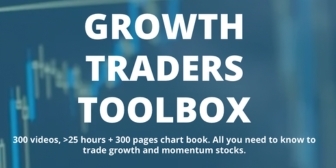

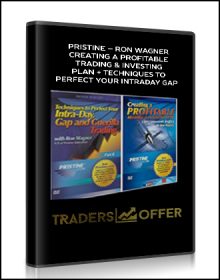
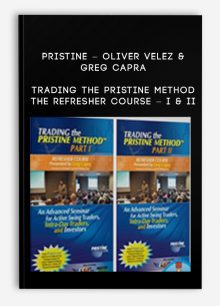

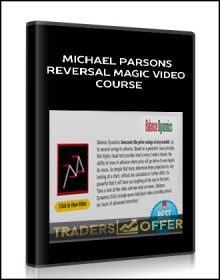
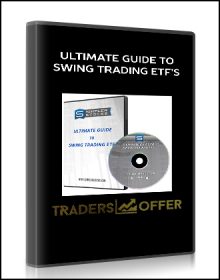


Reviews
There are no reviews yet.